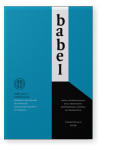Vol. 65:2 (2019) ► pp.175–199
Estilo indirecto en la mediación interlingüística, intercultural y social del español al alemán
The role of the interlinguistic-intercultural and social mediator (IISM) is acquiring increasing relevance in societies that receive immigrants. Nevertheless, training has not yet been regulated. This article analyses the specific linguistic needs and practices of such mediators in the context of Spanish speaking immigration to German speaking countries. It can be observed that not only does the IISM require specialised linguistic terminology but also specialised training at the level of communicative functions. This article examines one highly relevant example of such communicative functions, that of indirect speech. In German, indirect speech is rich in expressive complexity and diversity. This means that from a Spanish-German comparative viewpoint this aspect is particularly sensitive and merits special emphasis in the training of the IISM.
Article outline
- 1.Introducción
- 2.Relevancia social y función del intermediario lingüístico, cultural y social
- 3.Formación académica y/o profesional del MIIS
- 3.1Observaciones preliminares
- 3.2Máster en Comunicación Intercultural, Interpretación y Traducción en los Servicios Públicos
- 4.Necesidades comunicativas específicas del mediador lingüístico y cultural
- 4.1El discurso indirecto
- 4.2El discurso indirecto en español y en alemán: análisis contrastivo
- 5.Conclusiones
- Notas
-
Referencias
Article language: Spanish
